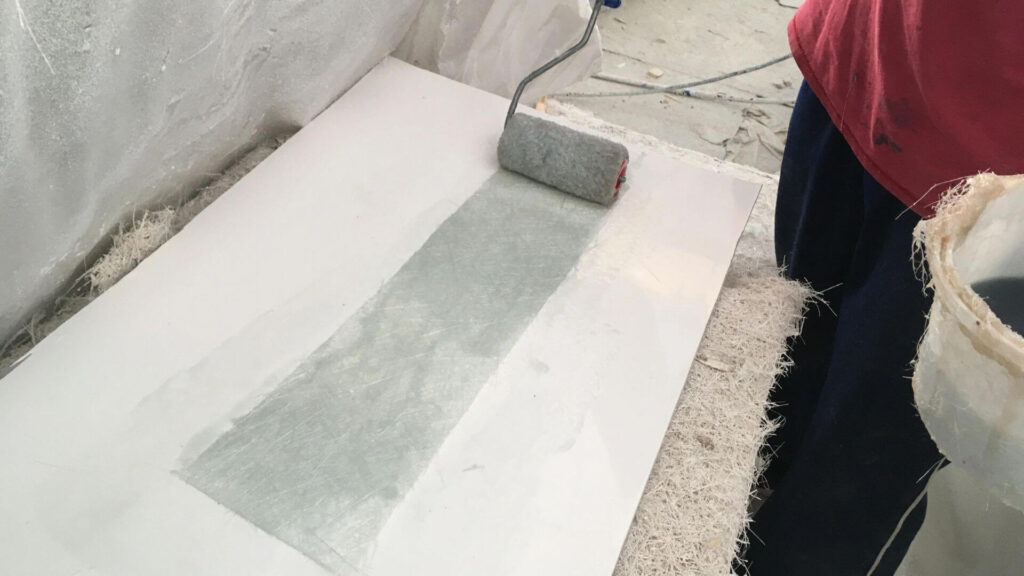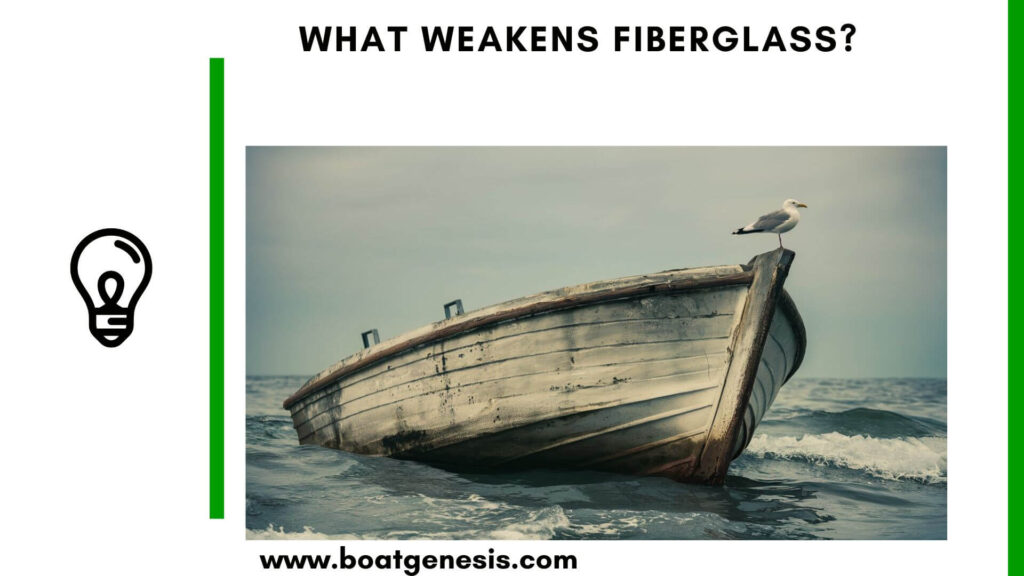Fiberglass is a versatile and durable material used in many applications, from boats and cars to swimming pools and construction. However, like any material, fiberglass can be weakened by various factors over time.
In this ultimate guide, we’ll dive deep into what causes fiberglass to deteriorate and how you can prevent or mitigate these issues.
Let’s get started.
Understanding the Composition of Fiberglass
To understand what weakens fiberglass, it’s essential to know its composition.
Fiberglass is made of thin glass fibers embedded in a resin matrix. The type of resin used can impact the strength and durability of the final product.

As mentioned in the Fundamentals of Fiberglass & Composite Materials, “Reinforcements include fiberglass cloth, fiberglass mat, carbon fiber … It also has excellent tensile strength, but poor compression strength.”
Factors that Weaken Fiberglass
Several factors can contribute to the weakening of fiberglass over time:
- UV Exposure: Prolonged exposure to ultraviolet (UV) rays from the sun can cause the resin in fiberglass to break down, leading to cracks and brittleness.
- Moisture: Water can seep into fiberglass through cracks or poorly sealed areas, causing delamination and weakening the structure.
- Impact Damage: High-impact collisions or accidents can cause cracks, chips, or even holes in fiberglass, compromising its integrity.
- Improper Repairs: Inexperienced or rushed repairs using incompatible materials or techniques can further weaken the fiberglass structure.
- Chemical Exposure: Certain chemicals, such as strong acids or solvents, can eat away at the resin, weakening the fiberglass over time. For example, “[a] solution with 38 percent hydrochloric acid is going to dissolve the resin slowly when in contact with the fiberglass,” according to a Quora discussion.
Preventing and Mitigating Fiberglass Weakening
Now that we know what can weaken fiberglass, let’s explore some ways to prevent or mitigate these issues:
- Regular Maintenance: Inspect your fiberglass regularly for cracks, chips, or other damage. Clean and wax the surface to protect it from UV rays and moisture.
- Proper Repairs: If damage occurs, have it repaired promptly by a professional using the correct materials and techniques to maintain the fiberglass’s strength. Or you could simply DIY.
- Storage and Covers: When not in use, store your fiberglass items in a cool, dry place or use appropriate covers to shield them from UV rays and the elements.
- Avoid Harsh Chemicals: Be mindful of the cleaning products and chemicals you use on or near your fiberglass to prevent unintentional damage.
The Bottom Line
Fiberglass is a strong and versatile material, but it’s not invincible.
By understanding what weakens fiberglass and taking proactive steps to prevent or mitigate these factors, you can ensure that your fiberglass items remain in top condition for years to come.
Remember, regular maintenance, proper repairs, and protection from the elements are key to preserving the strength and integrity of your fiberglass.

Founder of BoatGenesis, Warren has hands-on experience in fiberglass boat repairs, marine equipment testing, and powerboat building. Learn more about Warren.




